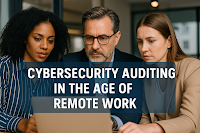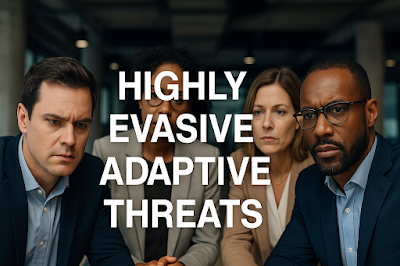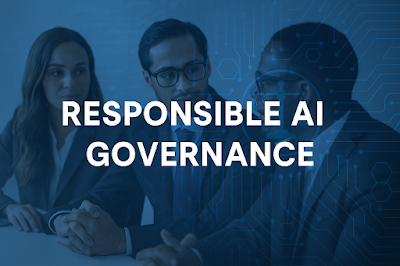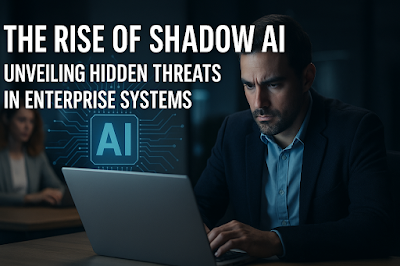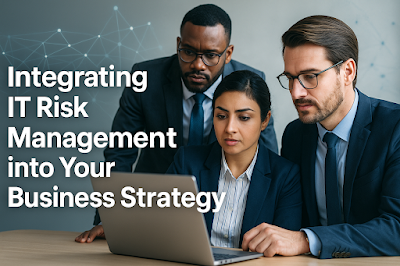Introduction
In today’s fast-moving and interconnected business environment, risk events don’t wait for audit cycles. They happen in real time, often in clusters, across departments and functions. Yet many organizations still rely on siloed systems for audit, risk, and compliance. This fragmented approach creates blind spots, slows down responses, and increases exposure. That’s why a growing number of forward-thinking organizations are turning to Connected Risk. This framework brings together risk-related activities under one coordinated system—fueled by shared data, smarter tools, and cross-functional collaboration. In this article, we explore what Connected Risk really means, how it works, and why it’s quickly becoming essential for modern audit and assurance teams.
The Evolution from Siloed Functions to Integrated Governance
Traditionally, organizations treated internal audit, compliance, and risk management as distinct disciplines. Each had its own tools, processes, and lines of reporting. While this setup may have worked when risks were slower and more predictable, it’s increasingly out of step with today’s reality. Complex risks like cyberattacks, supply chain failures, ESG breaches, and regulatory shifts span across teams—and often go undetected when departments operate in isolation. The call for integrated governance is now stronger than ever. Boards and regulators are demanding end-to-end visibility and timely insights. That can only happen when these once-siloed functions align around shared goals, systems, and data.
What is Connected Risk?
Connected Risk is an enterprise-wide strategy that links audit, risk, and compliance functions to provide a unified view of risk exposure. Instead of managing risks in isolated spreadsheets or systems, organizations adopt centralized platforms and standardized processes. Information flows freely across teams, giving leaders a real-time understanding of vulnerabilities and control effectiveness. Connected Risk isn’t just a technology play—it’s a cultural and operational shift. It transforms risk oversight from a passive, retrospective function into an active, forward-looking discipline.
Why the Traditional Risk Model Is Breaking Down
Many organizations are stuck with outdated risk architectures. Compliance teams run their checks. Risk managers run theirs. Audit shows up after the fact. By the time findings are shared, the damage is already done or the context has changed. In such environments, duplicated effort, missed signals, and inefficiencies are rampant. This not only affects operational resilience but also credibility with regulators and investors. Connected Risk addresses these issues by linking control owners, assurance providers, and risk leaders in a common framework that supports faster, better decisions.
The Role of Internal Audit in Connected Risk
Internal audit plays a critical role in making Connected Risk a reality. As the function responsible for providing independent assurance, auditors can bring valuable insights into whether risk processes are working as intended. But this role is evolving. Rather than only checking for compliance after the fact, auditors now embed themselves earlier in the risk lifecycle. They collaborate with risk and compliance teams, provide real-time advisory input, and use technology to continuously monitor emerging risks. Certifications such as the Integrated Audit & Assurance Professional (IAAP) from OCEG reflect this shift in expectations and capabilities for audit professionals.
Case Example: Implementing Connected Risk in Financial Services
One regional bank found itself overwhelmed with overlapping risk reports from audit, compliance, and operations. With little coordination, it was hard to tell whether high-risk issues were being addressed or just passed between departments. The bank adopted a Connected Risk model by consolidating risk registers, unifying control assessments, and investing in a common GRC platform. Within a year, audit findings dropped by 30%, control issues were resolved faster, and leadership had clear dashboards showing risk trends across the enterprise. Staff also reported higher confidence in the risk process, thanks to improved visibility and less duplication.
Technology Enablers of Connected Risk
Modern technology makes Connected Risk possible. Integrated GRC platforms such as AuditBoard centralize risk registers, audit plans, policies, and compliance requirements. AI-based analytics help surface emerging risks before they escalate. For example, machine learning can flag anomalies in vendor payments, policy breaches, or failed controls across business units. Dashboards bring data to life, showing leadership where the greatest risks lie and what’s being done about them. Cloud-based solutions allow scalability, real-time collaboration, and mobile access—features essential for agile risk response in today’s distributed work environments.
Data Integration: The Backbone of Connected Risk
Connected Risk hinges on the ability to integrate data from diverse systems—HR, finance, IT, operations—into a common language of risk. That means aligning taxonomy, establishing a single source of truth, and building interfaces between risk data feeds. For example, linking incident management logs with audit findings helps identify recurring control failures. Connecting HR attrition data with compliance breaches might reveal hotspots in certain departments. The quality and accessibility of data can make or break the Connected Risk vision.
Challenges to Adopting a Connected Risk Model
Despite its advantages, transitioning to Connected Risk involves obstacles. Organizations must overcome resistance from teams accustomed to working in silos. Data quality issues and incompatible legacy systems can slow down integration. Cultural factors also play a role—trust, collaboration, and shared goals aren’t automatic. Clear executive sponsorship is crucial. So is change management, training, and the right governance structure to ensure alignment without duplication or overload. Without these foundations, the initiative may stall or become just another layer of bureaucracy.
Benefits of a Connected Risk Approach
The payoff for getting Connected Risk right is substantial. It improves agility by helping organizations respond faster to threats. It reduces costs by eliminating redundant efforts and improving resource allocation. It enhances transparency by aligning reporting across departments. Most importantly, it strengthens trust—with regulators, customers, and the board—by demonstrating that risk is actively managed, not just monitored. Research from firms like Deloitte supports the measurable performance improvements achieved through integrated risk governance.
How to Begin the Transition
Starting the journey to Connected Risk doesn’t require a full overhaul overnight. Here’s how many successful organizations approach it:
- Step 1: Benchmark maturity. Assess how integrated your current risk, audit, and compliance functions are. Use maturity models or independent assessments to identify gaps.
- Step 2: Build a business case. Show leadership how integrated risk drives performance, reduces costs, and increases regulatory confidence. Highlight quick wins and long-term ROI.
- Step 3: Pilot first. Test Connected Risk in one area—like IT risk or third-party risk—before scaling. Focus on one business unit or department to refine your model.
- Step 4: Align your frameworks. Standardize definitions, risk categories, and control libraries across functions. This ensures apples-to-apples comparison of risk data.
- Step 5: Choose tools wisely. Look for platforms that support cross-functional workflows, integrations with existing systems, role-based access, and intuitive dashboards. AuditBoard’s Quick Start Guide is a helpful resource for compliance leaders exploring this transition.
- Step 6: Communicate often. Bring stakeholders on board with regular updates, shared KPIs, and success stories. Encourage open discussion about pain points and resistance.
- Step 7: Invest in people. Connected Risk isn’t just about systems—it’s about people. Upskill staff in analytics, collaboration, and risk communication. Encourage rotational roles between audit, risk, and compliance.
- Step 8: Monitor and adapt. Build in mechanisms to measure progress, collect feedback, and refine your model. Treat Connected Risk as a living strategy, not a one-off project.
Leadership’s Role in Enabling Connected Risk
No transformation succeeds without strong leadership, and Connected Risk is no exception. Executives and board members must champion the vision for integrated risk governance. This includes setting clear expectations, aligning incentives, and modeling collaboration across silos. Leadership must also ensure adequate resourcing for the technology, talent, and change management necessary to support the shift. Transparency and trust flow from the top. When leaders emphasize the strategic value of risk intelligence—and treat audit and compliance as enablers rather than enforcers—they lay the cultural foundation for Connected Risk to thrive. Effective communication from the top reinforces why integration matters and how it will benefit both operations and strategy.
Conclusion
Connected Risk is more than a buzzword—it’s a necessary evolution for modern organizations that want to stay ahead of risk while enabling performance. By aligning audit, compliance, and risk functions through shared tools, language, and priorities, organizations build resilience and clarity in an increasingly uncertain world. The path isn’t easy, but the rewards are clear: better insights, faster action, and stronger assurance. For leaders in audit and assurance, embracing Connected Risk isn’t just smart—it’s essential for relevance. As regulatory demands grow and risk interconnectivity deepens, only those organizations that connect the dots will stay prepared. The future belongs to the integrated, and the time to start is now.
















